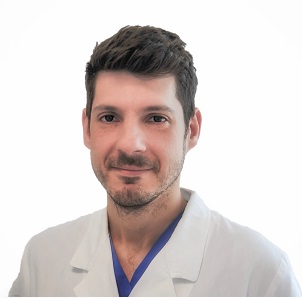Studying at the University of Verona
Here you can find information on the organisational aspects of the Programme, lecture timetables, learning activities and useful contact details for your time at the University, from enrolment to graduation.
Academic calendar
The academic calendar shows the deadlines and scheduled events that are relevant to students, teaching and technical-administrative staff of the University. Public holidays and University closures are also indicated. The academic year normally begins on 1 October each year and ends on 30 September of the following year.
Course calendar
The Academic Calendar sets out the degree programme lecture and exam timetables, as well as the relevant university closure dates..
| Period | From | To |
|---|---|---|
| 1° ANNO 1° Semestre CLO | Oct 1, 2018 | Dec 9, 2018 |
| 2° ANNO 1° Semestre CLO | Oct 1, 2018 | Nov 18, 2018 |
| 3° ANNO 1° Semestre CLO | Dec 3, 2018 | Jan 20, 2019 |
| 2° ANNO 2° Semestre CLO | Mar 4, 2019 | Apr 19, 2019 |
| 1° ANNO 2° Semestre CLO | Mar 11, 2019 | Apr 19, 2019 |
| 3° ANNO 2° Semestre CLO | Apr 29, 2019 | May 26, 2019 |
| Session | From | To |
|---|---|---|
| Sessione invernale CLO | Jan 7, 2019 | Feb 17, 2019 |
| Sessione estiva CLO | Apr 29, 2019 | Jul 28, 2019 |
| Sessione autunnale CLO | Sep 1, 2019 | Sep 30, 2019 |
| Session | From | To |
|---|---|---|
| Sessione autunnale CLO | Nov 1, 2018 | Nov 30, 2018 |
| Sessione primaverile CLO | Mar 25, 2019 | Apr 21, 2019 |
| Description | Period | From | To |
|---|---|---|---|
| Tirocinio Professionalizzante 2° anno 1° sem CLO | Tirocinio Professionalizzante 2° anno 1° sem CLO | Nov 18, 2018 | Mar 3, 2019 |
| Tirocinio Professionalizzante 1° anno 1° sem CLO | Tirocinio Professionalizzante 1° anno 1° sem CLO | Feb 4, 2019 | Mar 3, 2019 |
| Tirocinio Professionalizzante 2° anno 2° sem CLO | Tirocinio Professionalizzante 2° anno 2° sem CLO | Apr 29, 2019 | Sep 29, 2019 |
| Tirocinio Professionalizzante 1° anno 2° sem CLO | Tirocinio Professionalizzante 1° anno 2° sem CLO | May 27, 2019 | Sep 29, 2019 |
| Tirocinio Professionalizzante 3° anno 2° sem CLO | Tirocinio Professionalizzante 3° anno 2° sem CLO | Jun 24, 2019 | Sep 29, 2019 |
| Tirocinio Professionalizzante 3° anno 1° sem CLO | Tirocinio Professionalizzante 3° anno 1° sem CLO | Oct 1, 2019 | Apr 19, 2019 |
Exam calendar
Exam dates and rounds are managed by the relevant Medicine Teaching and Student Services Unit.
To view all the exam sessions available, please use the Exam dashboard on ESSE3.
If you forgot your login details or have problems logging in, please contact the relevant IT HelpDesk, or check the login details recovery web page.
Should you have any doubts or questions, please check the Enrollment FAQs
Academic staff
 elena.bravi@apss.tn.it
elena.bravi@apss.tn.it
 emanuelabusa@virgilio.it
emanuelabusa@virgilio.it
 daniela.cafaro@univr.it
daniela.cafaro@univr.it
 mcarfagna@ausl-cesena.emr.it
mcarfagna@ausl-cesena.emr.it
 daniela.dainese@univr.it
daniela.dainese@univr.it
 elda.righi@univr.it
elda.righi@univr.it
 esterveronesi@gmail.com
esterveronesi@gmail.com
Study Plan
The Study Plan includes all modules, teaching and learning activities that each student will need to undertake during their time at the University.
Please select your Study Plan based on your enrollment year.
1° Year
| Modules | Credits | TAF | SSD |
|---|
2° Year activated in the A.Y. 2019/2020
| Modules | Credits | TAF | SSD |
|---|
3° Year activated in the A.Y. 2020/2021
| Modules | Credits | TAF | SSD |
|---|
| Modules | Credits | TAF | SSD |
|---|
| Modules | Credits | TAF | SSD |
|---|
| Modules | Credits | TAF | SSD |
|---|
Legend | Type of training activity (TTA)
TAF (Type of Educational Activity) All courses and activities are classified into different types of educational activities, indicated by a letter.
Evidence-based obstetrics (2020/2021)
The teaching is organized as follows:
Learning outcomes
L’insegnamento è mirato a fare acquisire agli Studenti le conoscenze e competenze di base per ricercare fonti di letteratura autorevoli che rispondano a quesiti clinici; lo Studente acquisirà inoltre competenze per interpretare le fonti raccolte ed applicarle in un contesto clinico.
Modulo Metodologia dell'assistenza ostetrica basata sulle evidenze: Il corso ha l’obiettivo di guidare lo Studente ad acquisire conoscenze e competenze per porsi domande relative all’assistenza ostetrica; lo Studente sarà inoltre guidato a ricercare in maniera finalizzata le evidenze scientifiche attraverso fonti autorevoli (banche dati, riviste, etc), interpretarne la validità e i risultati e tradurle in Evidence Based Practice, in relazione al contesto operativo e all’esperienza professionale.
Modulo Informatica applicata alla ricerca della letteratura: L'obiettivo del corso è guidare lo Studente ad acquisire competenze per svolgere una ricerca di letteratura nei principali motori di ricerca bibliografica e banche dati (pubmed, cochrane library, guidelines); lo Studente acquisirà inoltre competenze di base per l’utilizzo di software di calcolo (es. Excell). Durante il corso lo Studente potrà sperimentare quanto appreso in ricerche di letteratuta anche finalizzate all’elaborato di tesi.
Modulo Statistica medica ed epidemiologia clinica: Il modulo si propone di fornire gli strumenti teorici e pratici indispensabili per valutare la diffusione delle malattie nelle popolazioni umane e i fattori di rischio associati. L'insegnamento mira quindi a fornire competenze nell'ambito dell'epidemiologia e della bio-statistica. Al termine dell'insegnamento lo Studente dovrà dimostrare di aver compreso i metodi bio-statistici di base applicati all'epidemiologia e gli elementi di un'indagine epidemiologica.
Program
------------------------
MM: CLINICA OSTETRICA
------------------------
------------------------
MM: STATISTICA MEDICA ED EPIDEMIOLOGIA CLINICA
------------------------
The course is structured in remote theoretical lessons (24h). The teaching material is made available to the students on the e-learning web page of the course (Moodle platform). Collection and organization of biomedical data: - stages of a statistical research; - population, sample and statistical units; - measurement process and measurement scales; - validity, accuracy and precision of a measuring instrument; - absolute, relative and cumulative frequencies; - one and two-way frequency tables. Graphical representation of biomedical data: - pie chart; - bar chart; - histogram; - cumulative frequency polygon. Measures of location and dispersion: - mode; - percentiles and median; - simple and weighted arithmetic mean; - range; - interquartile range; - deviance, variance and standard deviation; - coefficient of variation. An introduction to probability theory: - definition of probability; - axiomatic theory of probabilities; - rules of probability calculation; - independent and conditional probabilities; - Bernoulli and Gauss distributions. Diagnostic and screening tests: - sensitivity and specificity. The objects of epidemiology: - outcome; - measures of disease frequency (prevalence, cumulative incidence, incidence rate); - determinant. The occurrence relationship: - measures of absolute effect (attributable risk); - measures of relative effect (relative risk, odds ratio). The epidemiological studies: - ecological study; - cross-sectional study; - case-control study; - cohort study; - clinical trial. An introduction to statistical inference: - point estimate; - confidence interval; - statistical test.
------------------------
MM: METODOLOGIA DELL'ASSISTENZA OSTETRICA BASATA SULLE EVIDENZE
------------------------
Bibliography
| Author | Title | Publishing house | Year | ISBN | Notes |
|---|---|---|---|---|---|
| Lantieri PB, Risso D, Ravera G | Elementi di Statistica Medica | McGraw-Hill | 2007 | ||
| Jekel JF, Katz DL, Elmore JG, Wild DMG | Epidemiologia, Biostatistica e Medicina Preventiva | Elsevier-Masson | 2009 | ||
| Verlato G, Zanolin ME | Esercizi di Statistica Medica, Informatica ed Epidemiologia | Libreria Cortina Editrice, Verona | 2000 | ||
| Fowler J, Jarvis P, Chevannes M | Statistica per le Professioni Sanitarie | EdiSES srl, Napoli | 2006 | ||
| Rees Colin | Introduction to research for Midwives. (Edizione 3) | Churchill Livingstone Elsevier | 2011 |
Examination Methods
The final test consists of 3 exams, one for each unit. To pass the final test, the student must get a score of not less than 18/30 in each exam. The final mark (in thirtieths) is the weighted average over credits of the 3 scores.
------------------------
MM: CLINICA OSTETRICA
------------------------
------------------------
MM: STATISTICA MEDICA ED EPIDEMIOLOGIA CLINICA
------------------------
The final test is a written exam in presence with short answer questions and multiple choice questions. The remote exam is however guaranteed for all students who request it in the academic year 2020/21. The aim of the test is to verify the knowledge of all the topics discussed. The final evaluation is expressed in thirtieths.
------------------------
MM: METODOLOGIA DELL'ASSISTENZA OSTETRICA BASATA SULLE EVIDENZE
------------------------
Career prospects
Module/Programme news
News for students
There you will find information, resources and services useful during your time at the University (Student’s exam record, your study plan on ESSE3, Distance Learning courses, university email account, office forms, administrative procedures, etc.). You can log into MyUnivr with your GIA login details: only in this way will you be able to receive notification of all the notices from your teachers and your secretariat via email and soon also via the Univr app.
Gestione carriere
Tirocinio professionalizzante
Durante l'esperienza di tirocinio la supervisione dello studente è garantita da un sistema di tutorato articolato su 2 o 3 livelli e, di norma, assunto da operatori dello stesso profilo professionale degli studenti:
Tutor professionale con competenze avanzate sia pedagogiche che professionali; collabora all'organizzazione e gestione dei tirocini, alla progettazione e conduzione di laboratori di formazione professionale. Seleziona le opportunità formative, integra l'esperienza pratica con la teoria appresa, presidia in particolare le prime fasi di apprendimento di un intervento o di una competenza. Si occupa dei processi di apprendimento degli studenti in difficoltà, facilita i processi di valutazione dell'apprendimento in tirocinio e tiene i rapporti con le sedi di tirocinio. I Tutor Professionali sono scelti in accordo con le strutture sanitarie presso cui si svolge l'attività formativa e assegnati con incarichi triennali alla struttura didattica.
Guida di Tirocinio/tutor clinico è l'operatore che guida lo studente nella sede di tirocinio mentre svolge le sue normali attività lavorative. È garante della sicurezza dello studente e degli utenti, vigila affinché gli utenti ricevano una prestazione di qualità anche quando essa venga delegata agli studenti, si assicura che gli stessi siano informati e diano il loro consenso ad essere assistiti da uno studente.
Al termine di ciascun anno di corso viene effettuata una valutazione certificativa per accertare i livelli raggiunti dallo studente nello sviluppo delle competenze professionali attese.
Tutor CdS Ostetricia: Dott.ssa Sabrina Valletta
Per ulteriori informazioni sul tirocinio consultare la pagina del servizio
Per eventuali infortuni: dal 1° marzo 2024 la documentazione e la certificazione medica degli infortuni di studenti dovrà essere trasmessa esclusivamente mediante l’utilizzo del questionario online su piattaforma Elix form accessibile dal seguente link:
https://www.univr.it/it/organizzazione/tecnica-e-logistica/logistica/servizi-logistici
pertanto la modalità cartacea sarà dismessa e non verranno prese in considerazione altre modalità di trasmissione.
Il questionario deve essere compilato a seguito di infortunio per la comunicazione obbligatoria al datore di lavoro.
La segnalazione dell’infortunio deve essere fatta anche per lesioni di lieve entità o prognosi da uno a tre giorni.
Documents
| Title | Info File |
|---|---|
|
|
pdf, it, 198 KB, 30/06/21 |
|
|
pdf, it, 576 KB, 30/06/21 |
|
|
pdf, it, 493 KB, 30/06/21 |
|
|
pdf, it, 911 KB, 30/06/21 |
Graduation
Documents
| Title | Info File |
|---|---|
|
|
pdf, it, 200 KB, 10/04/24 |
|
|
pdf, it, 196 KB, 05/03/24 |
|
|
pdf, it, 145 KB, 28/03/24 |
|
|
pdf, it, 424 KB, 15/01/24 |
Appelli d’esame
Documents
| Title | Info File |
|---|---|
|
|
pdf, it, 194 KB, 22/01/24 |
|
|
pdf, it, 178 KB, 13/02/24 |
|
|
pdf, it, 183 KB, 24/04/24 |
|
|
pdf, it, 234 KB, 15/04/24 |
|
|
pdf, it, 176 KB, 23/04/24 |
Student login and resources
Ulteriori attività formative
La Commissione Didattica propone e organizza ampia offerta di attività didattiche opzionali, realizzabili con seminari, attività a piccoli gruppi, partecipazione al progetto TECO T/D, partecipazione ad eventi di aggiornamento professionale selezionati, tirocini, fino al conseguimento di un numero complessivo di 6 CFU. Le attività formative a scelta dello studente si concludono con una valutazione di “approvazione”; tale attività concorre al completamento delle certificazioni di profitto requisito per accedere all’esame finale. Qualora lo studente si presenti con una documentazione ed elaborazione insufficienti il Coordinatore deciderà le modalità per il completamento/integrazione di tali attività.
Orario lezioni
La frequenza in aula delle lezioni è prevista per tutti i Corsi di Studio e per tutti i relativi anni.
Le lezioni in Borgo Trento sono indicate sui prospetti seguenti e non sul portale MyUniVR.
Per i Laboratori 1° anno 2° semestre, comunicheremo successivamente la suddivisione nei 6 gruppi.
Documents
| Title | Info File |
|---|---|
|
|
pdf, it, 194 KB, 26/03/24 |
|
|
pdf, it, 300 KB, 02/04/24 |
|
|
pdf, it, 245 KB, 08/04/24 |

 +39 045 8027657
+39 045 8027657






























